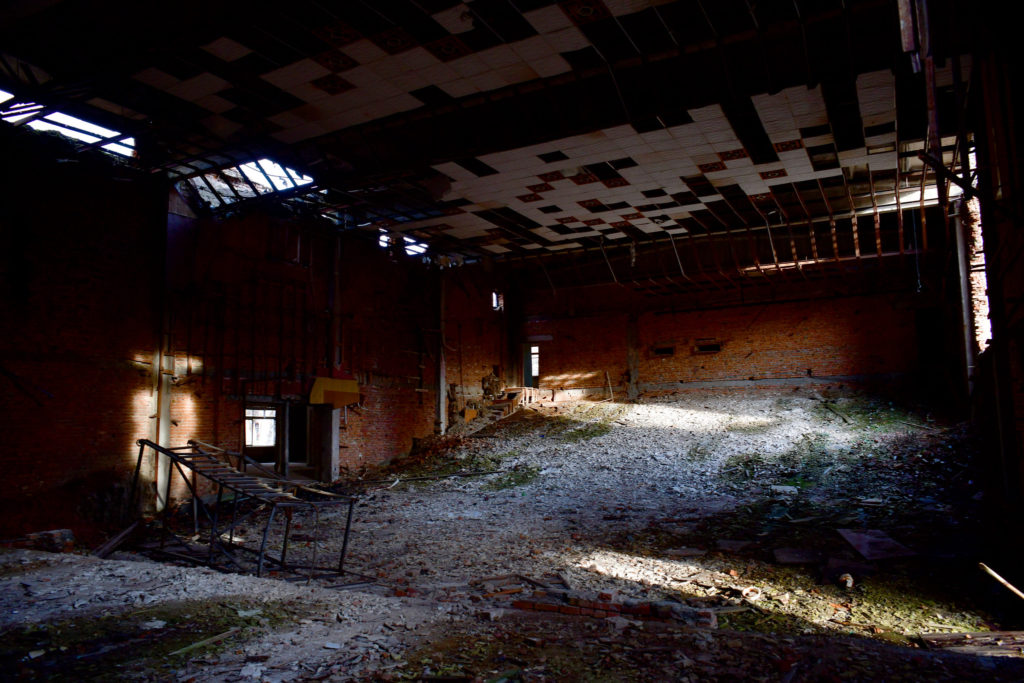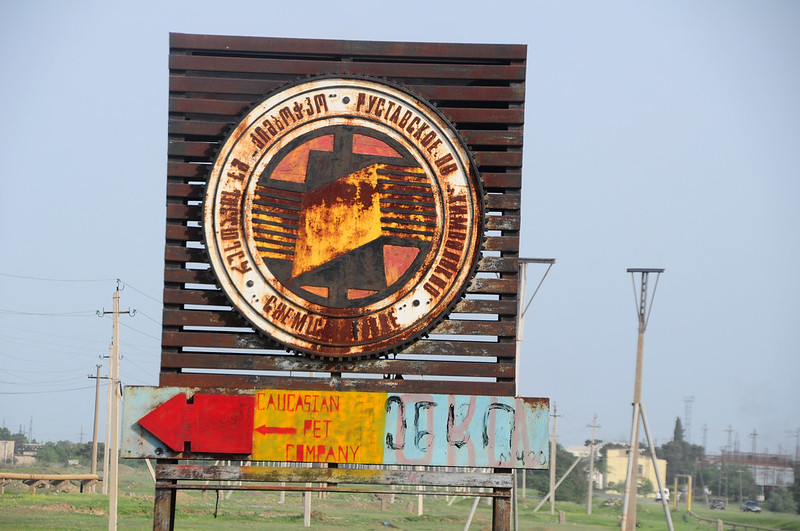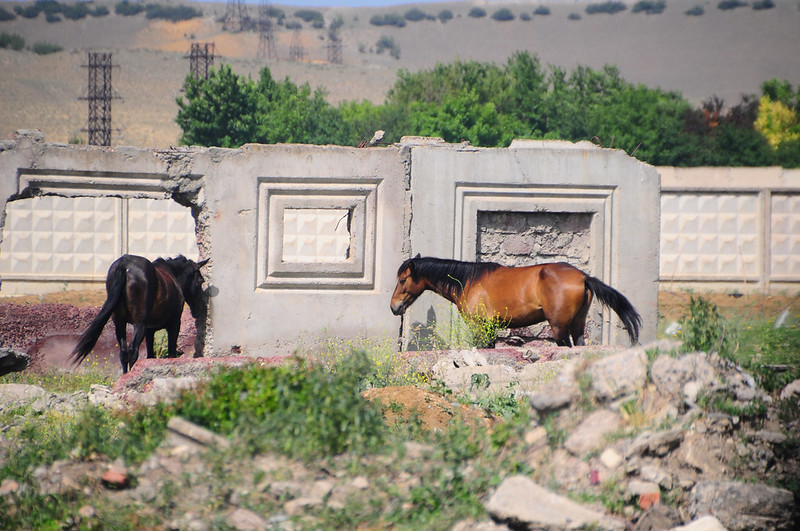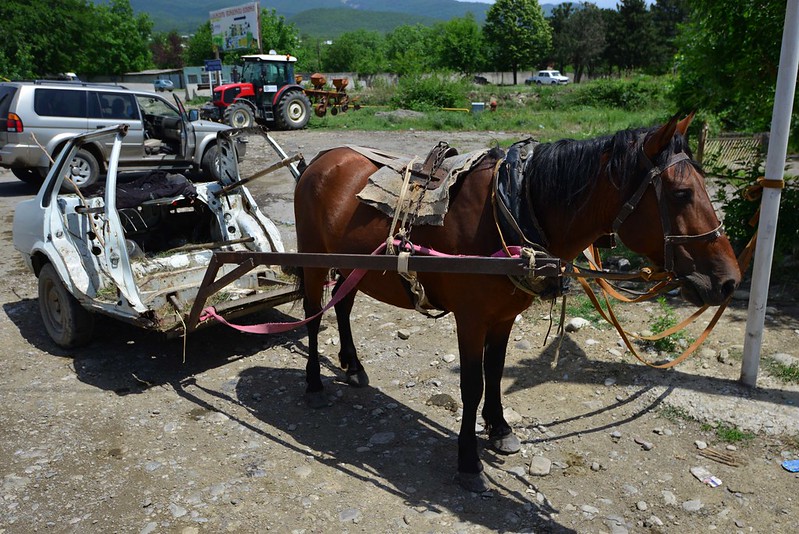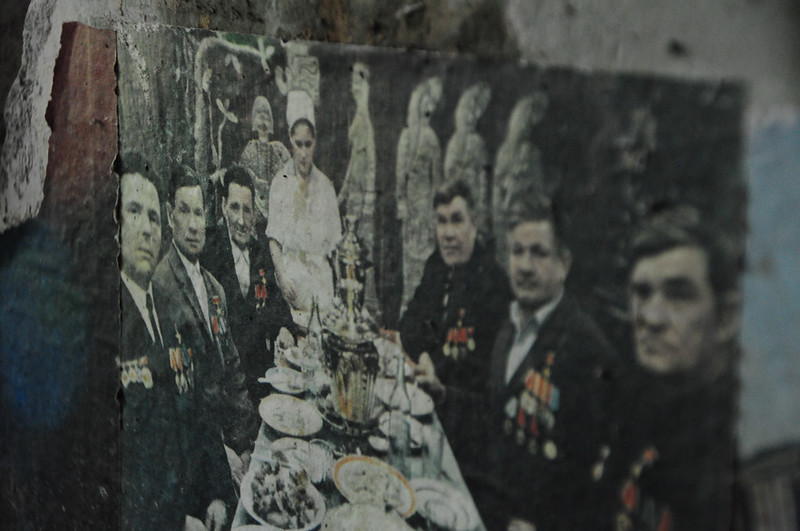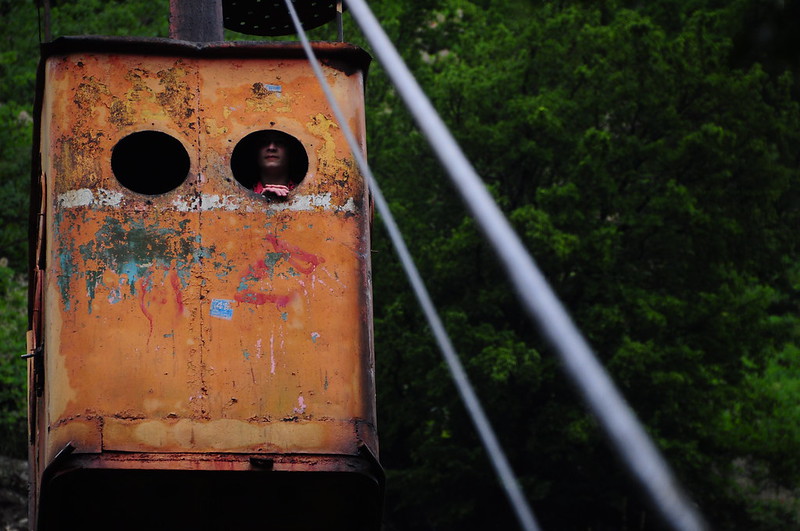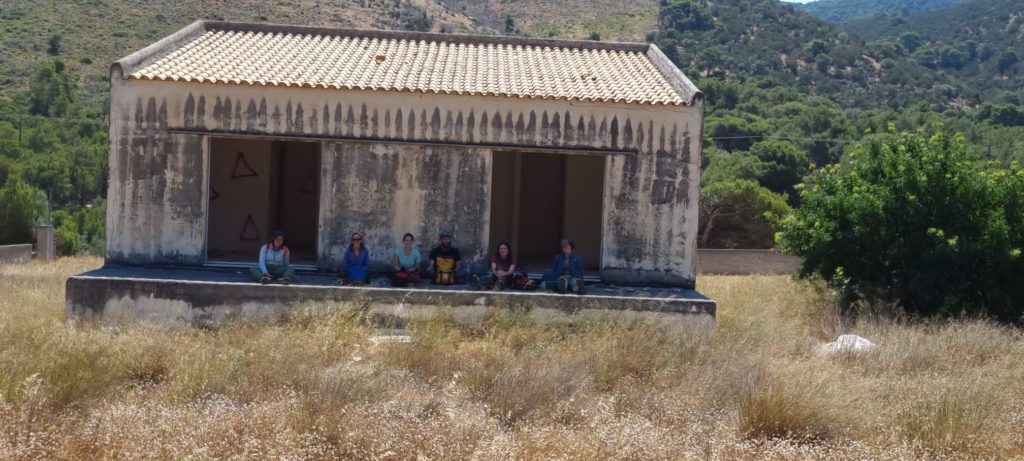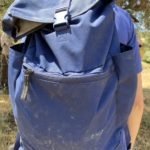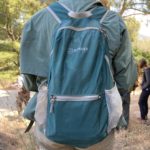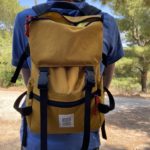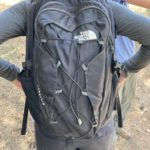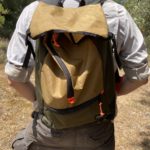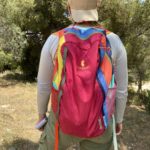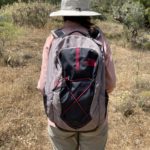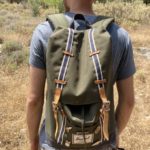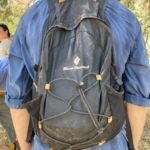The Backpacks of BEARS
Backpacks are a key tool in survey archaeology. Packs carry artifacts, maps, and tags, not to mention the daily essentials (water, food, sunscreen). Here we’ve gathered a photo selection of BEARS team member packs. They make what you might call an “archaeology” of our survey team with their own styles, production histories, and biographies. Some packs are top loaders, while others are front loaders. Some were purchased two weeks ago, while others have been in use for a decade. All carry the loads of the survey archaeologist!
The 2022 Town Survey
As part of the 2022 field season, BEARS is expanding its search for ancient activity in Porto Rafi beyond the inner bay and islands. The “town survey”, as it’s called, is being led by the fearless Maeve McHugh and is focused on documenting parts of the ancient landscape that are a bit more distant from the beautiful waters of the Porto Rafti bay. This includes the urban core of Porto Rafti as well as agricultural fields that surround the city—a landscape diverse in vegetation and modern habitation. The goals of the town survey are different from the surveys of Praso, Raftis, Pounta, and Koroni. From the town survey, we hope to gain a better understanding of the relationship between our well documented bay sites (e.g. Raftis) and important settlements in east Attica outside our survey zone, such as the sanctuary at Brauron. The town survey also has the potential to shed light on land use in the “chora” (countryside) of the two Athenian demes that inhabited the bay of Proto Raftis (Steiria and Prasiae). Additionally, the survey will help define settlement patterns of the Bronze Age and Late Roman period, time periods that we have already documented on the islands.
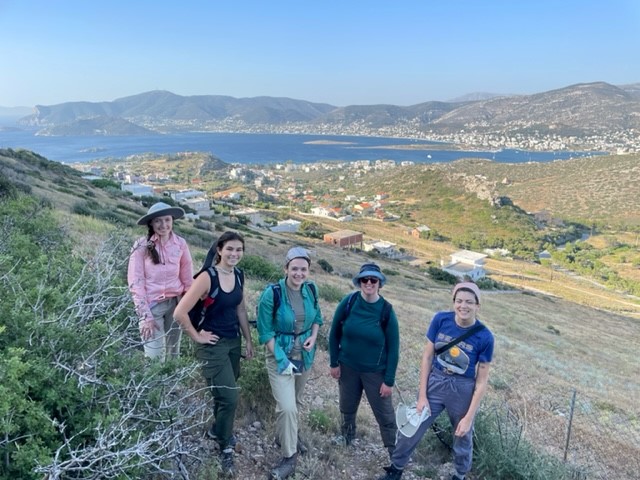
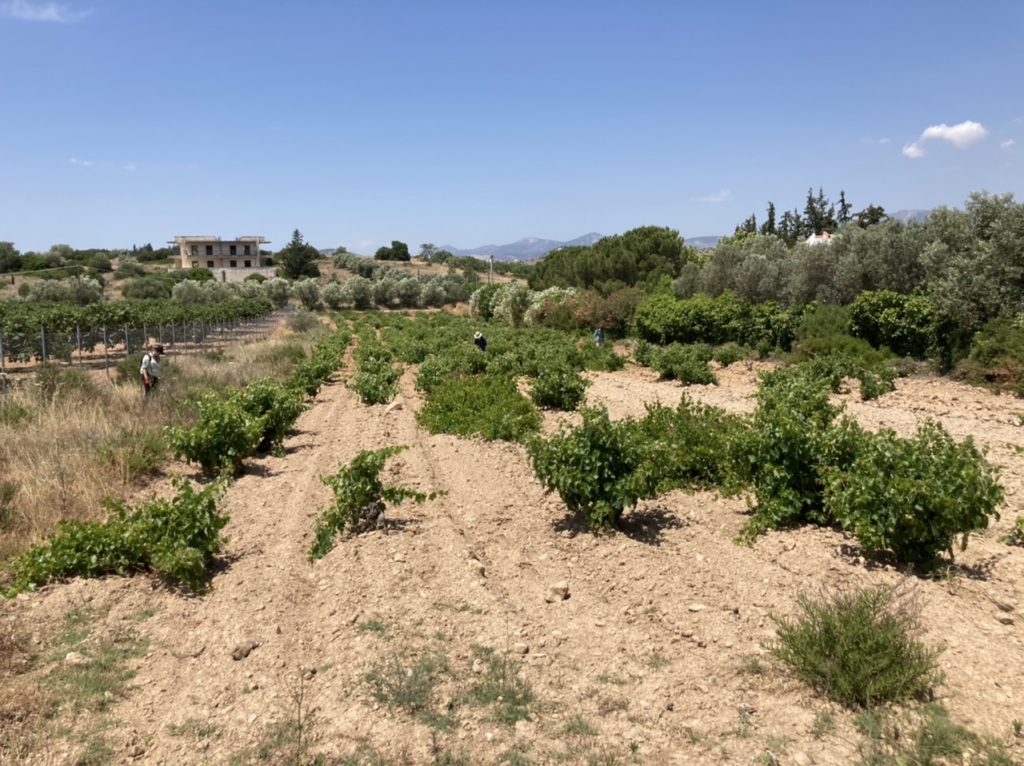
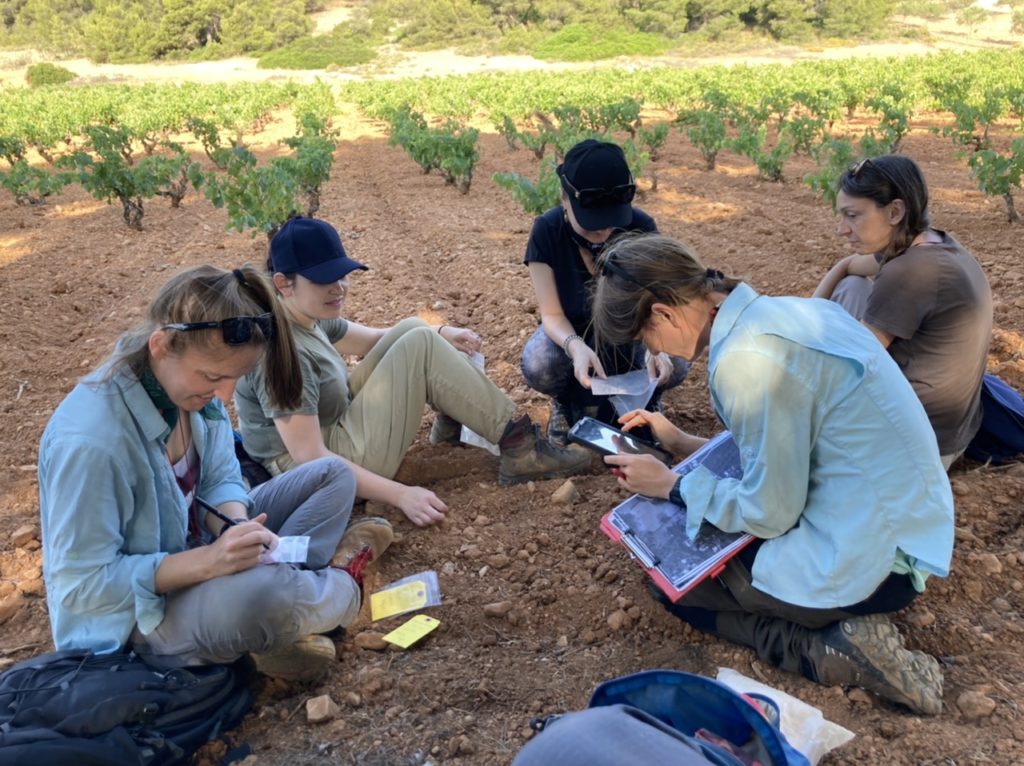
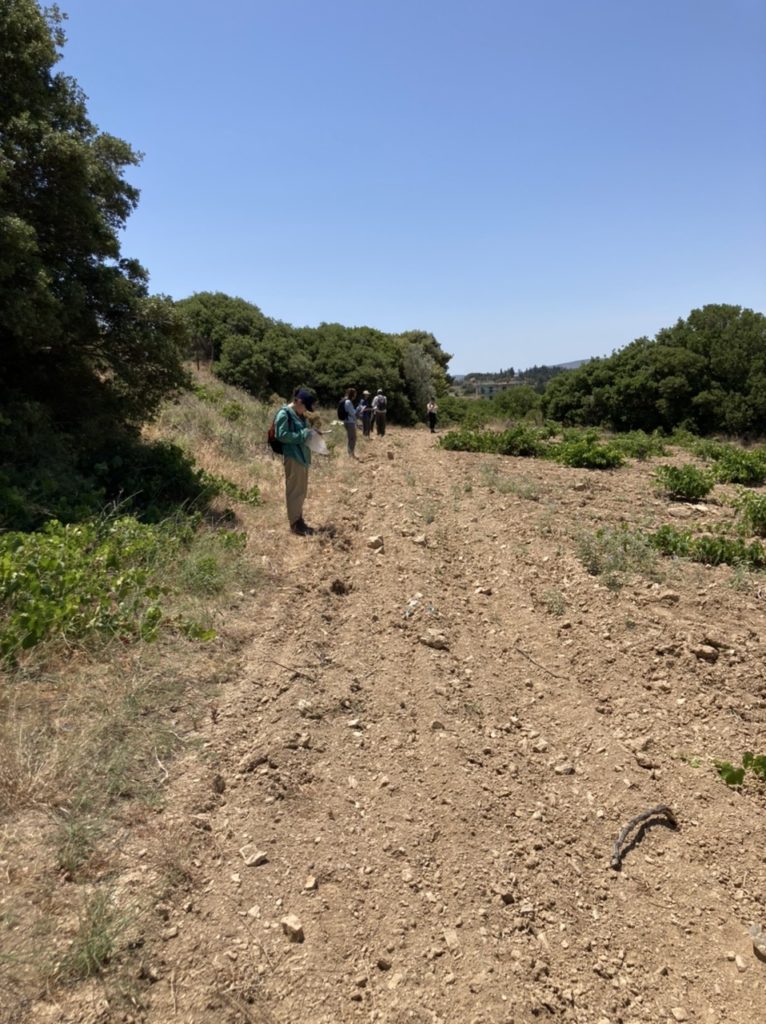
Sounds of the Day: June 8, 2022
Archaeology is a multi-sensory experience. Since our discipline primarily deals with images, it is easy to forget the past was full of different sounds, smells, and tastes. Instead of a photo of the day, here we offer the sounds of the day, a soundscape of the island of Raftis captured during a mid-morning work break.
Photo of the Day: June 6, 2022
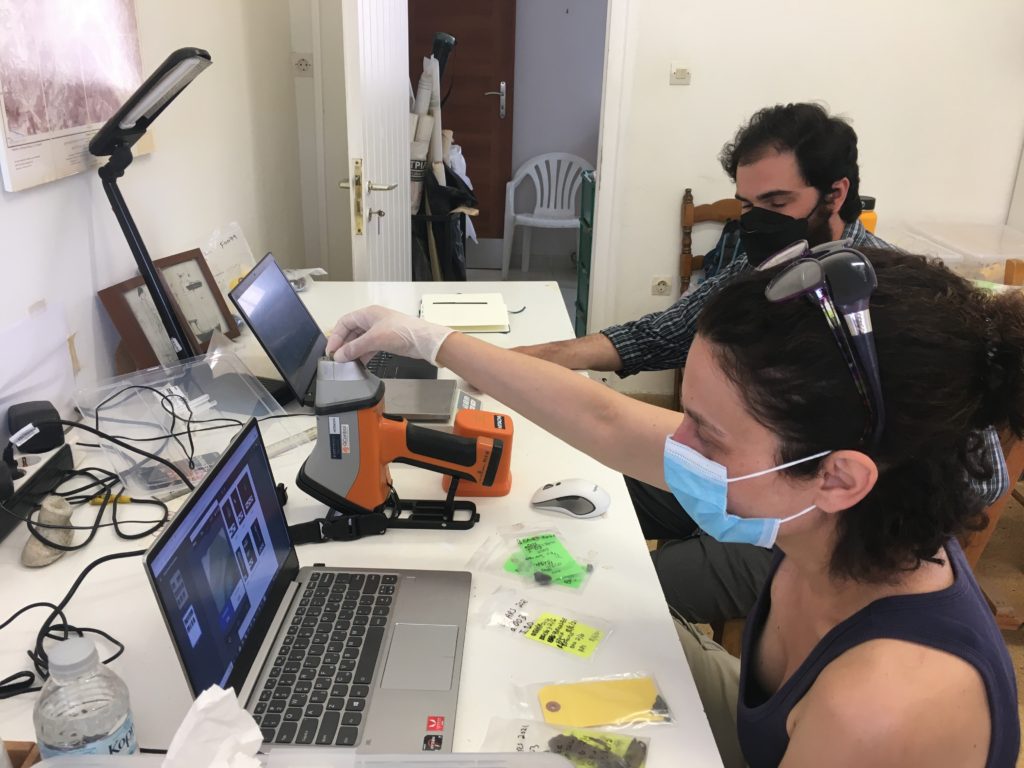
BEARS 2022 team member Braden Cordivari wrote this helpful explanation of how pXRF works. Thank you, Braden!
“Portable X-ray fluorescence spectroscopy (pXRF) is a non-invasive, non-destructive method of surface chemical analysis. The instrument works by directing an X-ray beam at the object and converting the signal it receives back to elemental composition. It can do this because the X-rays excite the atoms in the object and cause them to release energy that is characteristic of different elements. pXRF is well-suited to characterizing archaeological metals and slags to help researchers understand what something is made of. For instance, you can use pXRF to distinguish objects made of bronze (an alloy of copper and tin) from brass (copper and zinc).”
Welcome to BEARS 2022!
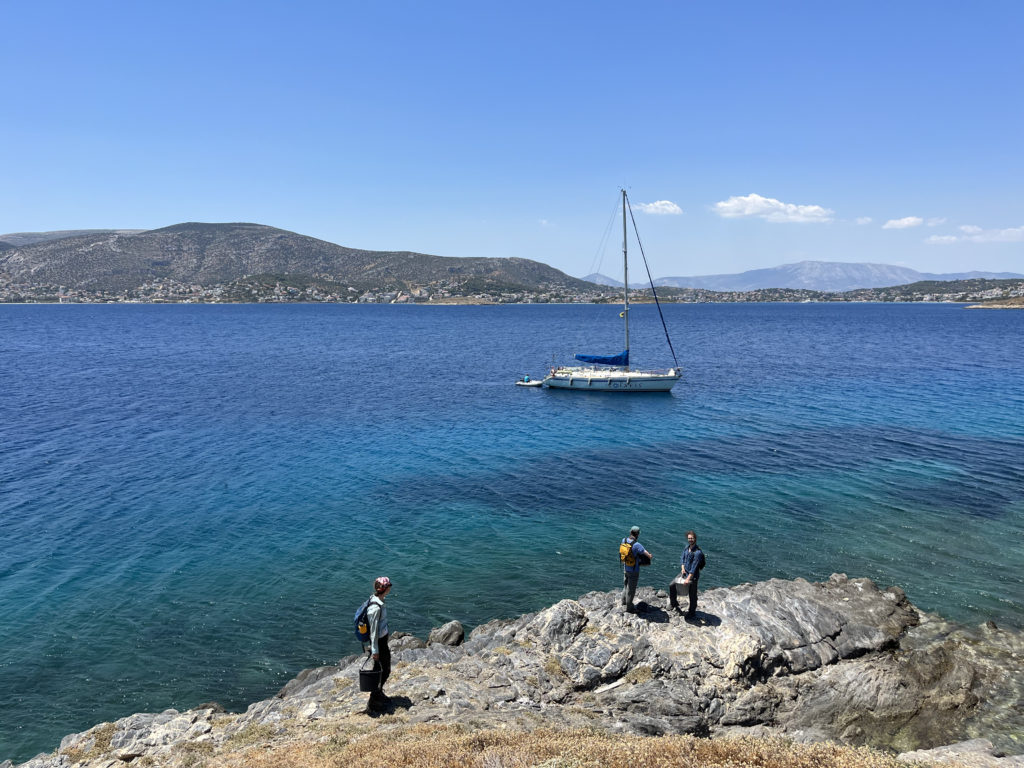
Team 1: Return to Raftis Island
Fans of BEARS will know that in 2019, we conducted gridded collection on about half of Raphtis island – the distinctive pyramidal island in the Bay of Porto Raphti, famous for the Roman statue set atop its peak. Fieldwork on Raphtis in 2019 yielded a dense and varied scatter of mostly LH IIIC and Late Roman finds. We hope to finish gridded collection on the island this summer (where possible – the topography is extremely steep in places!) and gain a better understanding of the nature of the assemblage there in these different periods. True to form, Raphtis is producing ceramics and lithics galore, with the favorite find of the week so far being a Mycenaean dog figurine. Raphtis’ “little sister” island of Raphtopoula, located to its northwest, is another potential candidate for survey this year, if we can figure out how best to approach its rocky cliffs.
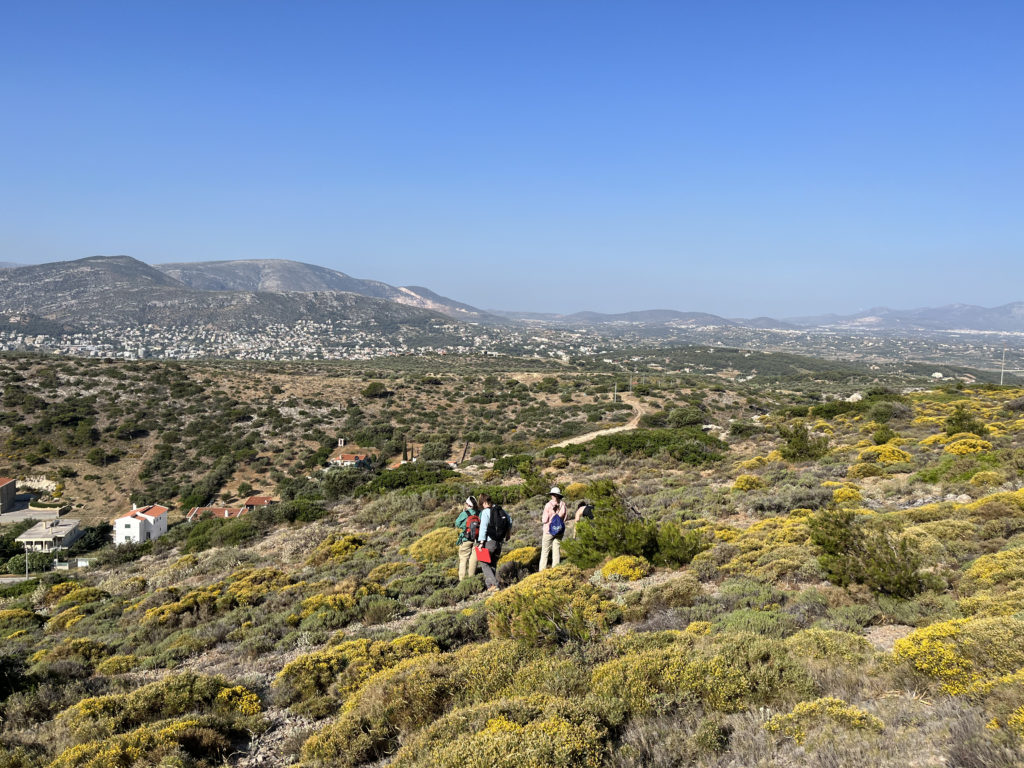
Team 2: Intensive survey in a highly developed environment
Much of our BEARS fieldwork during 2019 and 2021 focused on archaeological sites that were previously known, whether via extensive survey or excavation. This year, however, we’re seeking to gain a clearer sense of the distribution of finds around the bay by conducting intensive pedestrian survey in the fields and empty lots scattered around and between the vacation homes of Porto Rafti. Dr. Maeve McHugh is leading the charge in this arena and has started working in Zone B, which denotes the north side of the bay. Obsidian scatters and Classical-Hellenistic pithoi are already forthcoming, and we are looking forward to finding out what other material these fields will yield.
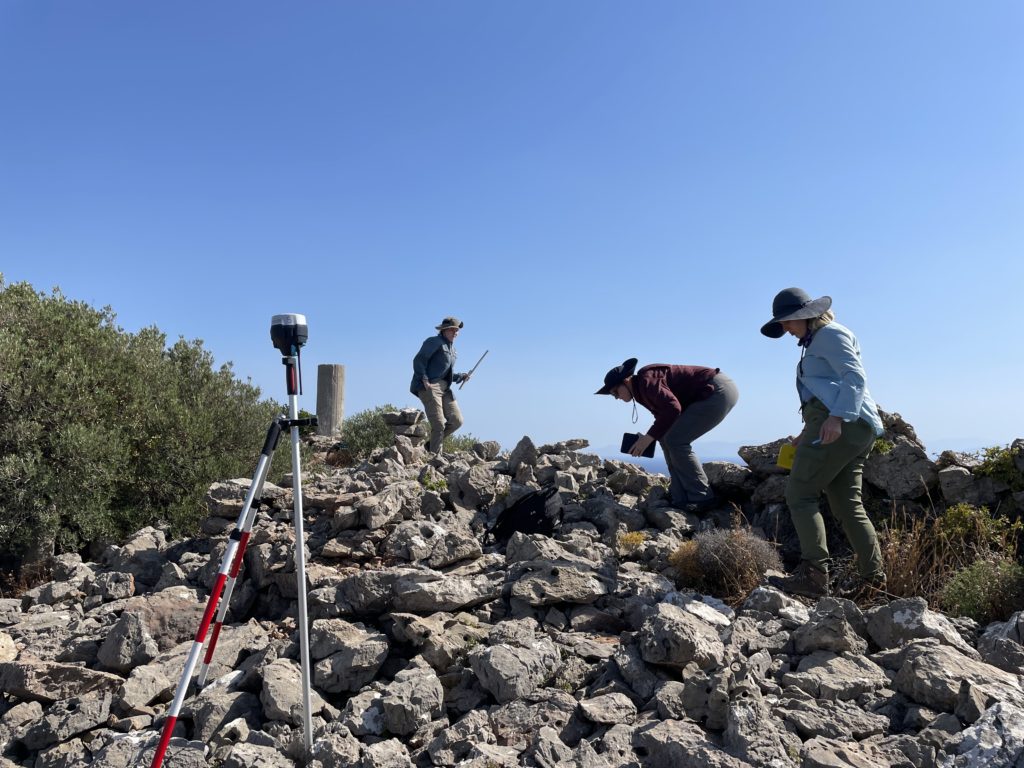
Team 3: Architectural documentation
We’re fortunate this year to be joined by Dr. Miriam Clinton from Rhodes College in Memphis, Tennessee, who is mapping and documenting architecture on the Koroni peninsula. Team members on Koroni have been measuring and photographing architectural features, as well as recording GPS points to be plotted in a GIS. The work has been focused on Koroni’s acropolis and is laying the groundwork for a detailed architectural plan of the site. We’re also very happy to welcome four undergraduate students from Rhodes College. BEARS is their first archaeological project, and we hope they will be hooked for life!
Team 4: The Brauron Museum
Finds analysis continues apace in the Brauron Museum. This week, Dr. Rob Stephan and Koroni expert Melanie Godsey have been processing the new finds from the field and reading the pottery collected from Praso in 2021. The small diachronic islet with material from every period from Early Bronze Age to Modern continues to offer new glimpses into islet life. We’re especially excited to hear what metallurgical specialist Myrto Georgakopoulou and tile expert Phil Sapirstein have to say about the fires of industry that once blazed on Praso’s shores.
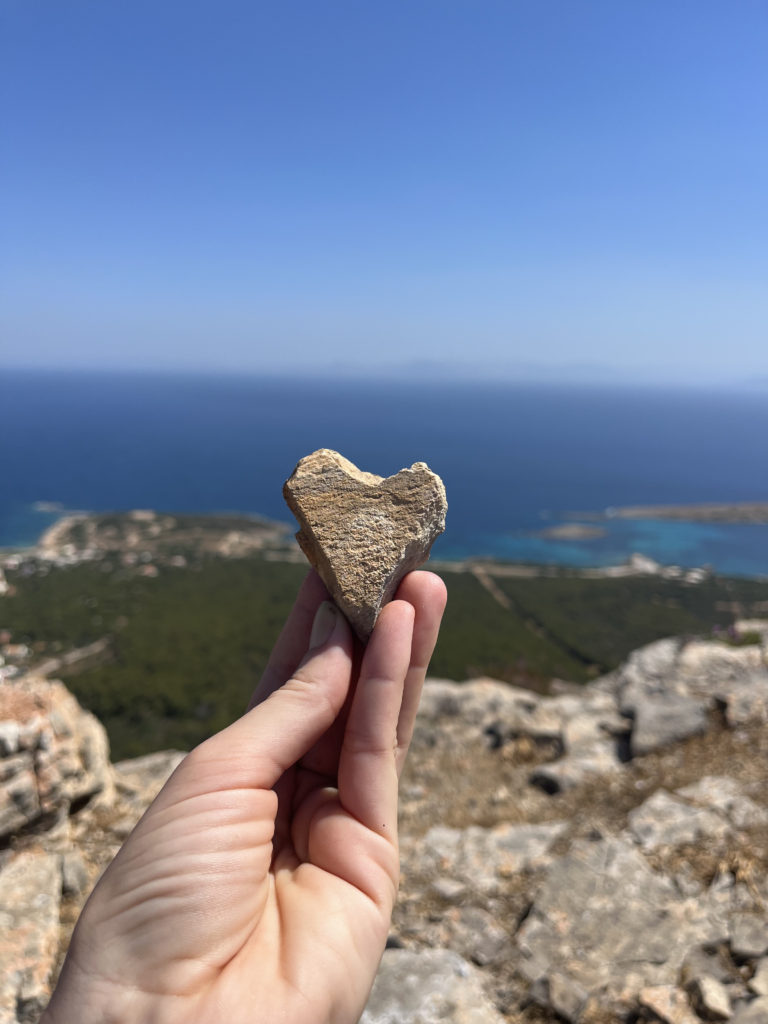
We’ll be posting frequent updates and musings here throughout the 2022 season. And keep an eye out for our Photo of the Day series, back by popular demand from 2021.
Ushering in Spring with LH IIIC Birds

As spring weather and its attendant morning bird-song has finally arrived in Athens, here are some jaunty birds from the iconographical repertoire of the Perati cemetery to mark the turn of the seasons. Not coincidentally, we are now in the planning phases for the 2022 BEARS season, and we look forward to sharing more project updates soon!
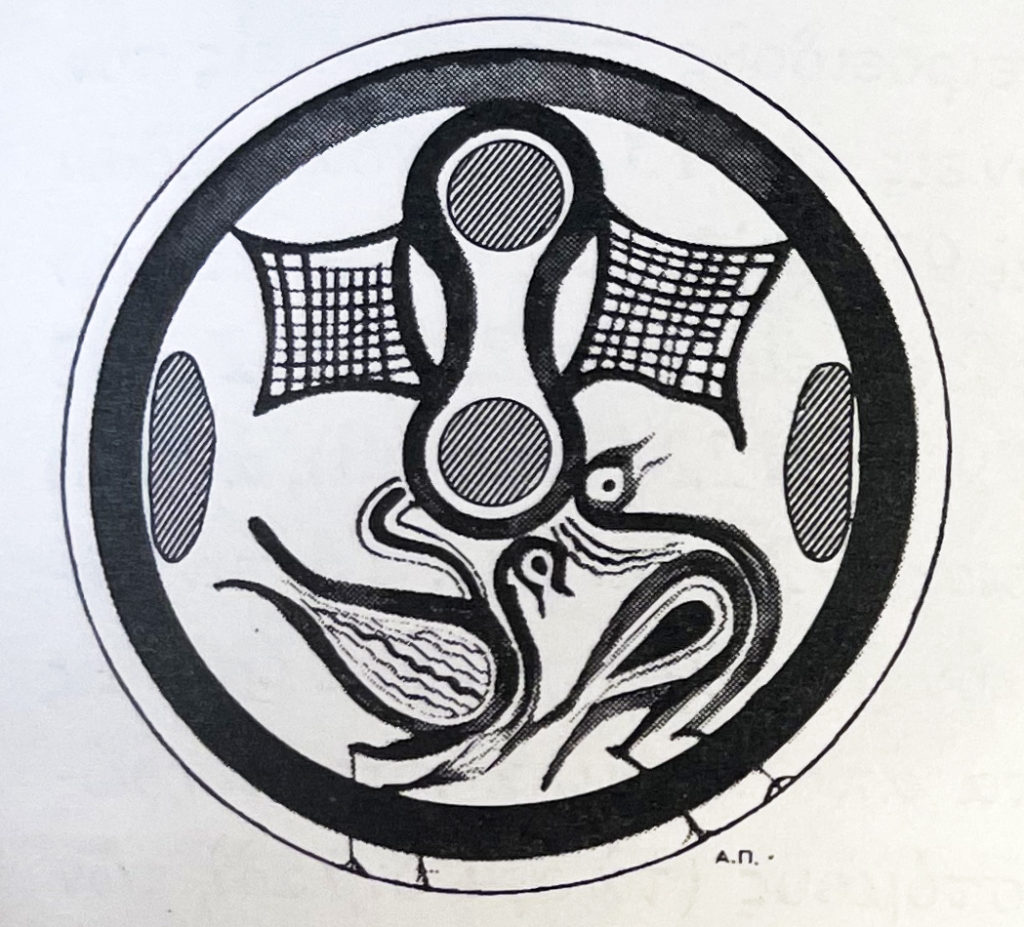
The Islet of Modi

A curious aspect of the LH IIIC archaeological record around south and central Greece is the frequent appearance of settlement remains on small offshore islets that (at least superficially) do not offer a very hospitable place for people to live. In our view Raftis islet in Porto Rafti bay was probably the site of a substantial residential settlement in spite of its steeply sloping landscape, lack of an obvious harbour, and absence of available drinking water. But it is just one of many such islands, and it’s clear we’re unlikely to understand the ‘enigma of Bronze Age Raftis’ without considering it within the context of comparable sites from the same period.
One such site is located on the islet of Modi, just off the southeastern coast of the delightful island of Poros in the southwestern Saronic Gulf. In 1999, LH IIIC remains of two building complexes on Modi were excavated by the erstwhile 2nd Ephorate under the leadership of Eleni Konsolaki-Yannopoulou; additional walls and structures were evident on the slopes of the islet, suggesting it (like Raftis) was densely settled. The cargo of an apparent LH IIIC shipwreck was subsequently located off its northern coast and explored by Christos Agouridis and a team from the Hellenic Institute of Marine Archaeology. The cargo includes a large number of hydriae, which seem to have been used as transport containers.
Given the islet’s position on an important sea route (the ferry from Athens to Poros still passes right under its nose), it’s not entirely surprising to find material remains there. However, as gnarly as the slopes of Raftis might seem, Modi’s extremely extreme goblin castle landscape makes it look as tame as a manicured golf course! Modi is also referred to as Liontari, because when viewed from certain angles it looks like the profile of a lion sitting in repose.
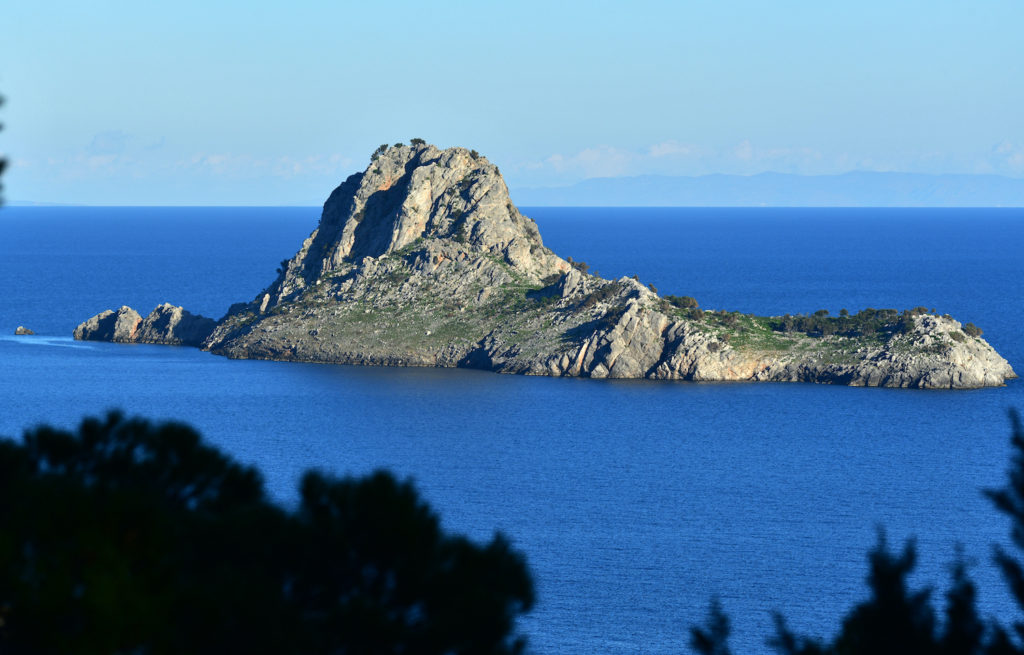
I had always been intrigued by reports from the work on and around Modi. However, I had never seen the island, or the material from the excavation which is on display in the Poros museum, until a recent trip down to the southern Argolid last week. It was definitely worth the drive – Modi looks even more improbable as a site for human settlement in person than it does in photos!
The finds in the museum are likewise very interesting to see in three dimensions. They suggest some intriguing connections with Porto Rafti bay. For example, a fancy large krater seems to be made of the White Ware fabric that we now know was being made on Praso and that is abundant on Raftis and in the Perati cemetery. Both the Perati cemetery and Modi have produced examples of pictorial pottery with depictions of human beings, which is not exactly widespread in the LH IIIC period. The finds of a strange wooden box with maybe Egyptianizing motifs added in bone inlays and a piece of a copper ingot on Modi suggest the same kinds of long-distance commercial and cultural connections observable in Porto Rafti’s material culture, too.
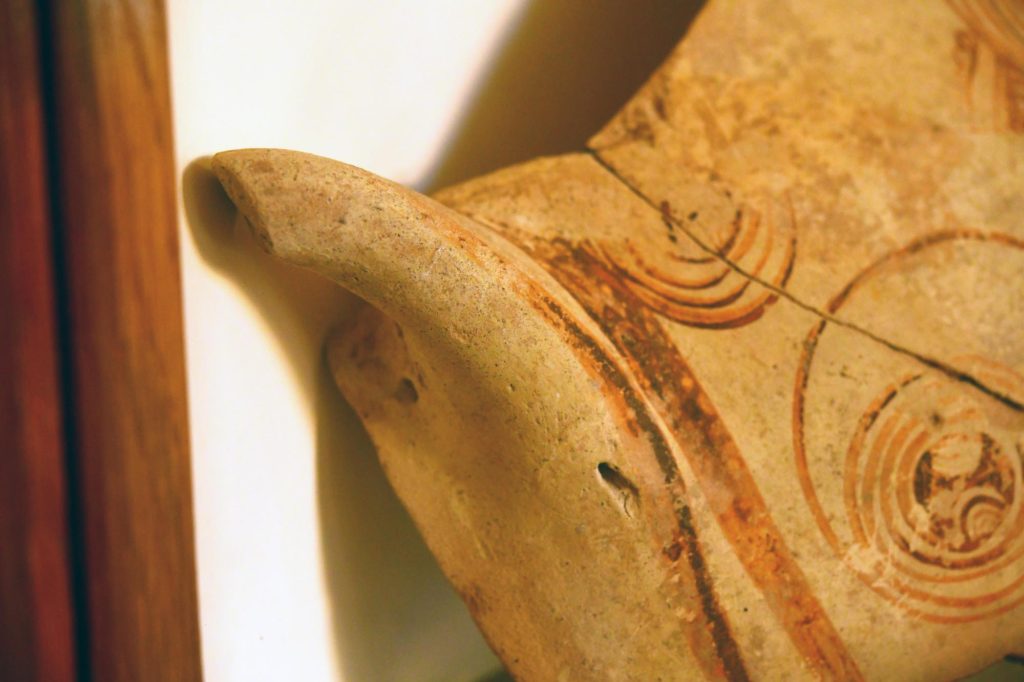
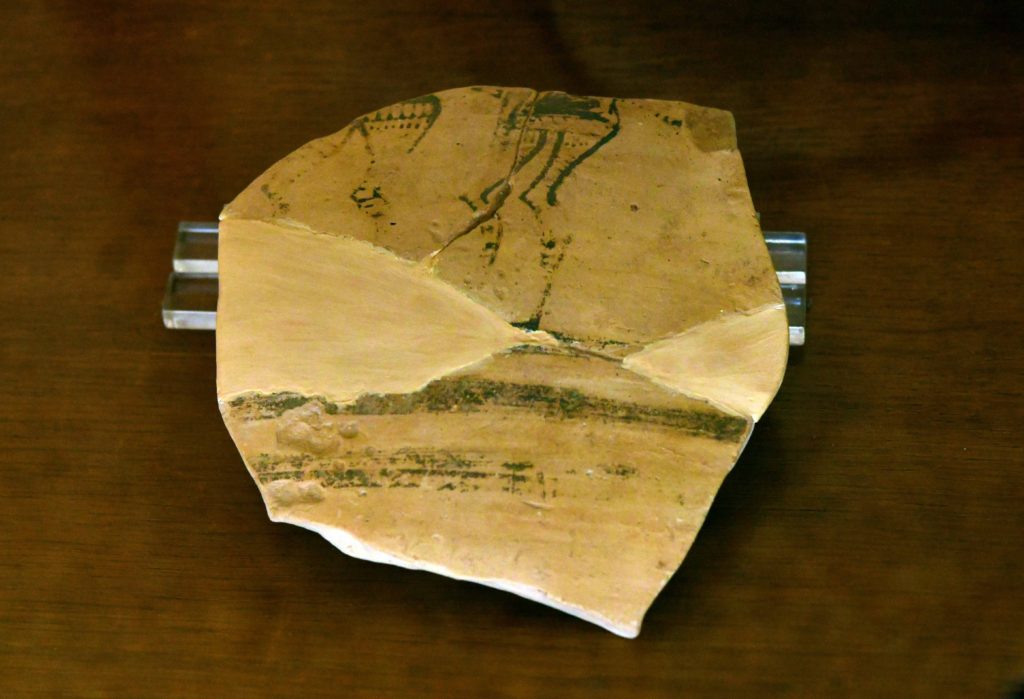
We can still only speculate about the nature of life on Modi in the Bronze Age, or why this site seemed an appealing spot to settle down, but we can probably bet that the community there was in touch with the Bronze Age folks in Porto Rafti, and maybe those living on other small islets in the area too. With any luck we’ll have additional insight into small islet life in the LH IIIC period by the end of our little survey project in a few years’ time!
BEARS 2022 AIA presentation
Since there was a technical kerfuffle in the playing of the BEARS presentation in the AIA proceedings, resulting in something of an unfortunate nonsense confusing blarggg of a video playback, I have posted the video on YouTube for those who would like to see what we actually had to report from our two recent seasons of study and fieldwork. Happy watching. – BEARS management
BEARS & BEARS team members on the program at the 2022 AIAs
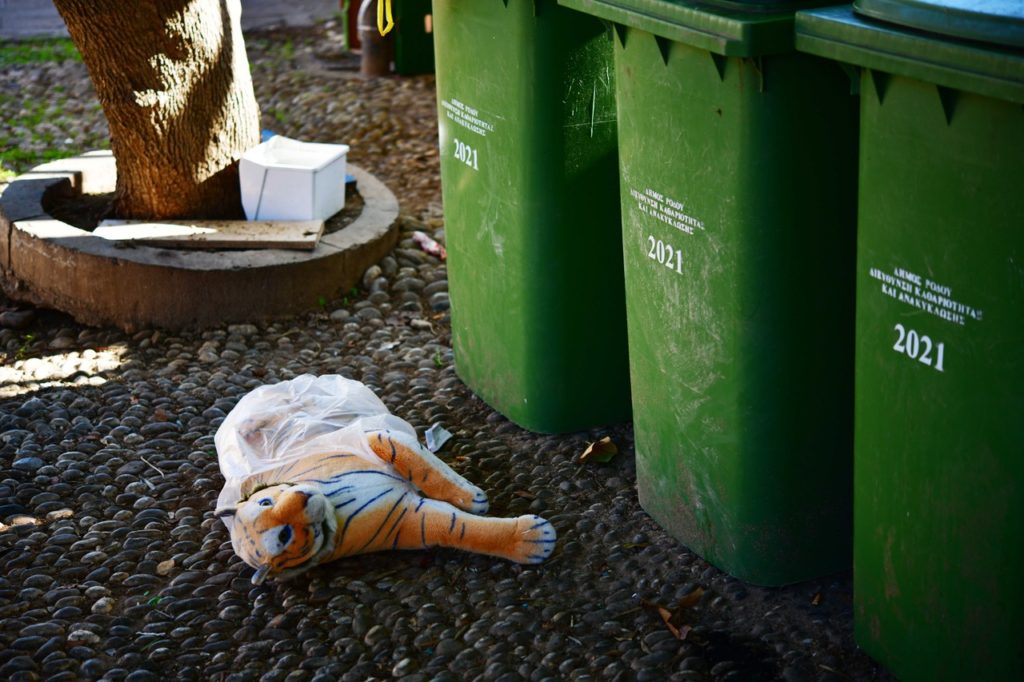
Greetings BEARS fans! It’s been an exhausting and weird end to 2021, with professional responsibilities and pressing tasks allowing little spare time for blogging lately, but just when you needed it most, here comes the beautifully titled year of 2022, the double deuce, the year of the tiger! Surely it will bring great archaeological survey finds, if nothing else? Little known fact – my high school sports jersey number was 22 AND our mascot was a tiger, so I feel a lot of good vibes already. Will be extra much so when we make it to 2222, so stay tuned about 200 years for the real triumphs!
As always for Greek archaeologists, the first big event of the New Year is the Archaeological Institute of America conference. This year the event is taking place online. It contains a little bit of content about BEARS and even more exciting research being presented by BEARS team members. Below are the dates and times of the relevant presentations. The BEARS lecture has been pre-recorded, so if you are a blog reader and don’t feel like registering for the conference, the video (an .mp4 file, about 18 minutes) can be shared directly upon request. Note that all times listed below are Pacific standard time, since the (now all virtual) meeting is “based” in San Francisco.
1. BEARS 2020 and 2021 field report
THURSDAY, JANUARY 6, 8:00-10:30 AM, session 1A: New Fieldwork In Aegean Prehistory
The Bays of East Attica Regional Survey 2020–2021: New Evidence for Settlement, Exchange, and Craft Production from Porto Rafti, Greece (20 minutes, 4th talk in the session)
Sarah C. Murray, University of Toronto, Catherine E. Pratt, Western University, Melanie Godsey, University of North Carolina–Chapel Hill, Joseph Frankl, University of Michigan, Bartłomiej Lis, Polish Academy of Sciences, Grace Erny, Stanford University, Robert Stephan, University of Arizona, Maeve McHugh, University of Birmingham, and Philip Sapirstein, University of Toronto
2. Mel Godsey presents on her dissertation research about the site of Koroni!
THURSDAY, JANUARY 6, 11:00 AM – 1:00 PM, session 2B: Sanctuaries And Public Space In The Hellenistic Period
Ptolemaic Trade Routes and the Garrison at Koroni (15 minutes, 5th/last talk in the session)
Melanie Godsey, University of North Carolina at Chapel Hill
3. A whole session on Archaic and Classical Crete organized by Grace Erny and friend of BEARS Dominic Pollard!
FRIDAY, JANUARY 7, 8:00-10:30 AM, session 4D: Bridging The “Gap”: Interdisciplinary Approaches To The Cretan Polis In The Archaic And Classical Periods (Joint AIA/SCS Colloquium)
ORGANIZER(S): Jesse Obert, University of California, Berkeley, Dominic Pollard, University College London, and Grace Erny, Stanford University
DISCUSSANTS: Dominic Pollard, University College London and Grace Erny, Stanford University
4. Phil Sapirstein discusses rooftiles from Archaic Didyma!
FRIDAY, JANUARY 7, 8:00-10:30 AM, session 4E: Geometric And Archaic Architecture
Archaic Architectural Terracottas from Didyma (20 minutes, first talk in the session)
Philip Sapirstein, University of Toronto
5. Mel Godsey (in tandem with a WARP colleague Machal Gradoz) provides an analysis of connectivity as evidenced by survey pottery from the western Argolid!
SESSION BLOCK 7: SATURDAY, JANUARY 8, 8:00-11:00 AM, session 7H: Ancient Greek Pottery: Processes Of Production And Analysis
Regional Connectivity and Ceramic Consumption: Pottery of the Western Argolid (20 minutes, 5th talk in the session)
Machal E Gradoz, University of Michigan and Melanie Godsey, University of North Carolina – Chapel Hill
Overall there looks to be tons of great content in this year’s conference, so if you haven’t registered already and need something to entertain you this weekend, head on over to the AIA website and sign up for the fun. Too bad we won’t be able to all hang out in person and catch up with old friends around the conference hallways yet again this year, but we look forward to interacting with any interested friends and colleagues online in the coming days.
